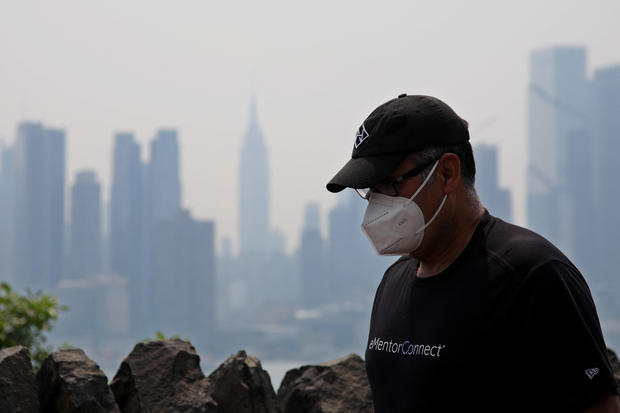Air pollution may be to blame for thousands of dementia cases each year, researchers say
Nearly 188,000 dementia cases in the U.S. each year may have been caused by air pollution, researchers estimate, with bad air quality from wildfires and agriculture showing the strongest links to a person's risk of Alzheimer's disease and other kinds of dementia later in life.
Published Monday in the journal JAMA Network Open, the new estimates are the latest to underscore the range of health risks scientists have long warned are being driven by air pollution.
While studies have already linked overall bad air quality to a number of health problems, including the risk of developing dementia, the new study offers a finer-grained look at how specific causes of air pollution seem to be more strongly linked to dementia than others.
Their findings were based on an analysis of data collected from a decades-long survey backed by the National Institutes of Health, following up with thousands of older adults around the country every two years about their health.
Researchers then combined those data with detailed air quality modeling, estimating what different people may have been exposed to in the specific areas where they lived.
They focused on what scientists call PM 2.5 air pollution, a benchmark for very small particles — less than 2.5 micrometers wide, a fraction of the diameter of a human hair — that can be inhaled from the air. These types of particles can come from a variety of sources, including vehicle exhaust and wildfire smoke, and are linked to health effects ranging from coughing and shortness of breath to worsening asthma to an increased risk of death from heart disease.
"The environmental community has been working very hard for the past 10 to 15 years to be able to predict exposures," said Sara Adar, associate chair of epidemiology at the University of Michigan's School of Public Health.
Those drew on a range of data, including measurements from the Environmental Protection Agency and details about nearby factors that could affect their air quality.
"They model all sources at once. Coal-fired power plants, agriculture, wildfires, traffic, all these different emission sources, and then they turn off the source in the model one at a time. And then they can see the difference in what levels are there with the emissions sources, and what are there without them," said Adar.
Their modeling had found the higher risk even after adjusting for a range of potential factors that could have led to muddled results, like sex, race and ethnicity, educational status and wealth.
They also were able to adjust for whether people previously lived in urban or rural areas.
While they also had information for where people moved during the survey, Adar acknowledged they did not have enough data to model every exposure or check for every difference throughout the course of their life — like where people were born — which might have impacted their results.
"Dementia takes a long time to develop. It's not something that might be, 'oh you've got a bad exposure last week, and now you have dementia.' It's more likely to build up over a lifetime," said Adar.
Beyond the direct emissions from wildfires and agriculture, Adar noted their analysis was able to take into account other kinds of air pollution that can also be traced back to these sources.
In addition to the smoke emitted from wildfires, other toxic molecules can be carried with the smoke as they burn through communities. Farming can also worsen air pollution, resulting from the ammonia that are released by sources like manure and fertilizer.
"Farms will release a lot of ammonia gas, and then in the air with the sunlight and other pollutants out there, they'll react to make particles, and those particles are what we see are likely toxins for the brain," said Adar.
Adar and Boya Zhang, also a researcher at the school, say they hope their new findings could drive more targeted interventions to address this dementia risk.
"Unlike many other common risk factors for dementia (eg, hypertension, stroke, and diabetes), exposures to air pollution can be modified at the population level, making it a prime target for large-scale prevention efforts," the study's authors wrote.




